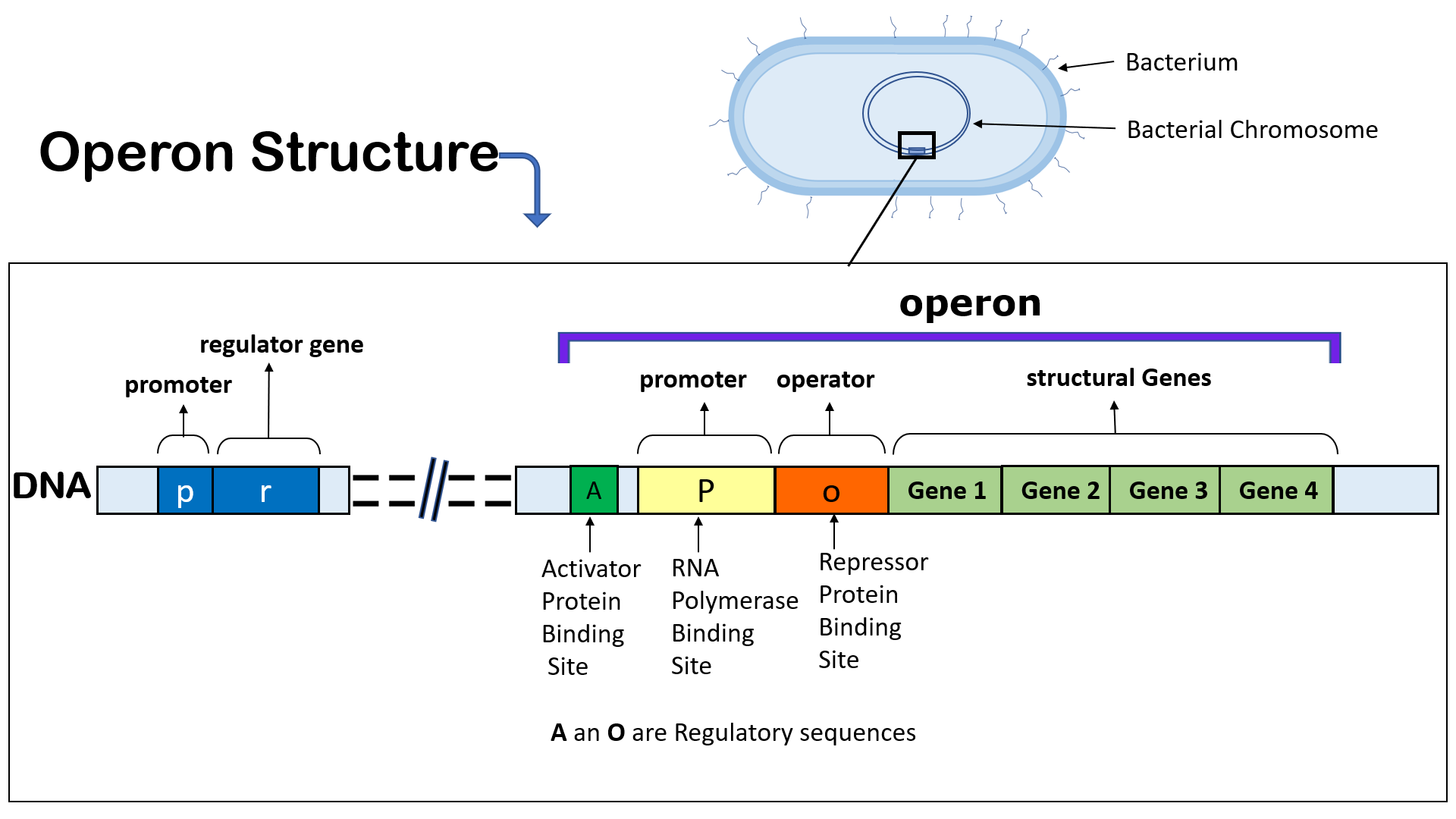Prokaryotes have special arrangement of genes on chromosome. This arrangement known as operon. However, operons are not found in eukaryotes. Operon is present only in prokaryotes. There is more than one gene in an operon. Genes present in an operon show co-ordinate regulation. In other words, either all genes are turned on or all genes turn off. All genes of an operon are controlled as a single unit.
Jacob and Monad Operon Model:
Francis Jacob (1920-2013) and Jacques Monad (1910-1976) were French scientists. They are famous for their work on E. coli. They coined the term “operon”. In 1961 they proposed the Operon model. Their operon model is the first attempt to explain gene regulation in prokaryotes. Jacob and Monad got Nobel prize Award in physiology or Medicine in the year 1965 for their research.
Structure of an operon in prokaryotes:
An operon contains two important sequences. The first one is Regulatory sequences and the Second one is the coding region. Regulatory sequences are Promoter and Operator. In Coding region structural genes are present. These Structural gene codes for different proteins.

Promoter:
A promoter is a sequence on the DNA. Promoters are present upstream from the structural gene in the operon. DNA-dependent RNA polymerase binds the promoter region for the transcription process. From a single promoter, all the genes in an operon get transcribed.
Operator:
This is the sequence of DNA. Operator region is present between promoter region and structural genes. Regulator gene produces protein. These protein binds to operator helps to stop or start of transcription.
Types of operon in prokaryotes:
There are two types of operon:
1. Inducible operon (used in Catabolic Pathway)
2. Repressible operon (used in Anabolic Pathway)
These two operons take part either in anabolic or catabolic pathways.
Inside cell metabolism occurs through two types of pathways
Catabolic pathway
Anabolic Pathway
Anabolic Pathway and Catabolic pathway both form metabolic pathway
Inducible operon in prokaryotes :
In catabolic pathway complex molecules are broken down into simpler ones. There is energy production in catabolic pathway. For example, glycolysis, Krebs cycle, Fermentation is catabolic processes. catabolic operon are inducible operon. Inducible operon encodes enzymes in catabolism. Therefore catabolic pathways need inducible regulation. Most importantly if complex molecule or substrate is present in the medium then only genes should be induced induction and enzymes synthesis happen.
Example: lac operon is an inducible operon. lac operon full form is lactose operon
Repressible operon in prokaryotes:
Anabolic pathway is a synthesis pathway. This pathway synthesizes new molecules and structures required for cell. Cell uses small molecules and builds large macromolecules. Anabolism pathway require energy. For example, synthesis Amino Acids, Fatty Acids, Protein, Chromosomes. Most of the operons anabolic pathway are repressible . Cell don’t make a particular substrate or amino acid in excess. If some substrate is present already inside cell then there is no need for production via activation of genes. As a result, cell conserves energy by switching off those genes through repression.
Example: trp operon is a repressible operon.
trp operon full form is Tryptophan operon.